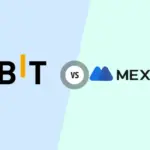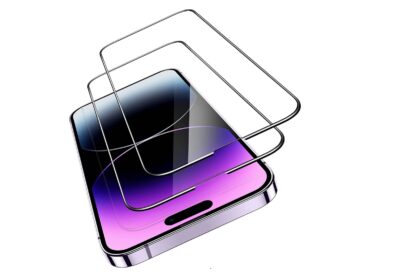An apk file is a compressed archive that holds everything an android app needs to run: compiled code (classes.dex), resources, assets, and the AndroidManifest.xml. This android package kit is the core file format used to install software on the android operating system.
On mobile devices, apps arrive quietly. When you use google play or the play store, the platform downloads and installs an apk behind the scenes. The system unpacks the archive, places contents in the right folders, and reads the manifest for permissions and components.
Users can also add apk files manually. Sideloading gives flexibility but carries risks like malware, permission misuse, and missed updates. Later sections will show safe install steps, how to verify signatures, and developer essentials such as building with Android Studio, signing releases, and testing on emulators and real devices.
APK basics: the Android Package Kit file format used today
Android packages bundle every piece an app needs into a single portable archive. At a high level, the android package kit is the standard file format the operating system uses to distribute and install software. Each package contains compiled code, resources, native libraries, and certificates so installations stay complete and predictable.
The format is a ZIP/JAR variant. That means common tools can open these files, but the structured layout makes them ideal for automated install routines. The platform parses the archive quickly, which helps with consistent updates across models.
Think of this as the mobile equivalent of .exe on Windows or .dmg on macOS: an apk file packages everything needed for deployment. When using android via google play or the play store, the store downloads and applies the package for you. Manual installs remain possible for testing or controlled distribution.
- Portability: move a package between environments for testing.
- Scalability: the same structure supports small utilities and large, complex apps.
Next, we’ll cover how the system unpacks these archives and runs the code on a device.
How APK files work on the Android operating system
Behind the progress bar lies a clear routine. The installer verifies signatures, decompresses the archive, and extracts code, resources, assets, and native libraries so each item lands in the correct folder on the device.
From download to placement
The installation process checks integrity, then unpacks the archive. The system copies app code (classes.dex), compiled resources, and native libraries into app-specific directories.
- Verification: signature checks in META-INF confirm integrity.
- Extraction: resources.arsc and res/ adapt layouts and strings for the device.
- Placement: each file goes to a managed location so apps run reliably.
Role of the manifest file
The manifest file declares package identity, requested permissions, components like activities and services, and versioning metadata. The operating system reads these entries to control access and routing.
Execution on Android Runtime
classes.dex holds compiled java kotlin bytecode. Android Runtime (ART) executes or optimizes that dex code for better performance. Updates replace code and resources but keep app data when signatures match.
| Element | Purpose | Why it matters |
|---|---|---|
| classes.dex | App logic in Dalvik bytecode | Runs on ART for execution and optimization |
| res/ and resources.arsc | UI layouts, strings, images | Ensures correct display per device config |
| META-INF signatures | Integrity and signing info | Prevents tampering and enforces updates |
If signatures mismatch, files corrupt, or SDK and ABI settings conflict, the system aborts installation. To users, this complex work looks like a simple install flow.
Inside an APK: components and structure developers and users should know
A single archive hides several distinct parts, each with a specific role during install and runtime. Understanding these elements helps developers optimize size and users verify integrity before granting access.
AndroidManifest.xml
The manifest file declares package name, requested permissions, exported activities and services, supported Android versions, and other metadata the system reads at install and launch.
classes.dex
Compiled Java and Kotlin code lives in classes.dex. The Android Runtime executes this Dalvik bytecode. Large apps may include multiple DEX files to split logic across modules.
resources.arsc and res/
resources.arsc holds compiled strings, styles, and other resources. The res/ directory contains layouts, images, and UI assets that the app loads based on device configuration.
assets/ for raw files and media
The assets/ folder stores raw files like fonts, HTML, or media. The android application reads these directly via AssetManager when runtime access is needed.
lib/ native libraries
Native .so libraries sit in lib/, organized per CPU ABI (armeabi-v7a, arm64-v8a, x86, x86_64). Splitting libraries by ABI reduces install size and improves performance on each device.
META-INF signatures and integrity verification
META-INF contains certificates and signature files used by the package installer to verify that the package has not been tampered with. Signature checks are a core security step.
Developers should minimize resource bloat, split native libs by ABI, and include only required items so installs remain fast and predictable across devices.
| Element | Location | Purpose |
|---|---|---|
| AndroidManifest.xml | / | Declares package name, permissions, components, and supported versions |
| classes.dex | / | Contains compiled Java/Kotlin bytecode executed by ART |
| res/ & resources.arsc | /res, resources.arsc | UI layouts, strings, images; device-specific resource selection |
| assets/ | /assets | Raw files accessed at runtime via AssetManager |
| lib/ | /lib/ABI | Native .so libraries optimized per CPU architecture |
| META-INF/ | /META-INF | Signing certificates and signature files for integrity checks |
What Is an APK File and What Does It Do? Explained
Packages travel from developer to device as compact bundles that carry code, resources, and signatures. They serve several roles: installing apps, delivering updates, sharing offline copies, and backing up installers for later use.
Automatic installs happen when google play or the play store manages downloads and applies updates. The store verifies signatures and replaces only the package code while keeping user data intact when versions match.
Manual installs, sideloading, and sharing
Sideloading lets users download apk files from third-party sources like APKMirror, APKPure, or F‑Droid and install apk manually. This gives access to apps android that might not appear in official catalogs but requires careful verification to avoid risks.
- Backups: export installer files for offline transfer between devices.
- Testing & enterprise: teams share builds directly with testers before public release.
- Caveats: restoring app data may fail if signatures or package identity differ.
| Use case | Who benefits | Pros | Cons |
|---|---|---|---|
| Play Store delivery | General users | Automatic installation, seamless updates | Regional or policy limits may block some apps |
| Third-party distribution | Advanced users, testers | Access older versions, geo-restricted apps | No automatic updates; higher security risk |
| Direct sharing & backups | Low-connectivity users, IT teams | Offline installs, quick internal distribution | Must verify authenticity and signing |
Always verify the source before you download apk or install apk on any android device. Next up: step-by-step safe installation on your device.
How to open and install APK files on an Android device
Sideloading requires care: a few steps keep installation safe and predictable. Start by allowing installs from your chosen browser or file manager. On your android device go to Settings > Apps > Special app access > Install unknown apps, then toggle Allow from this source.
Next, download apk from a trusted site or transfer the installer from a computer or cloud account. Open your Files app, browse to Downloads, and confirm the file name and size match the source listing.
Verify before you open apk
Scan the file with mobile antivirus and compare checksums if provided. Watch for unusual permission requests during the installer prompt.
Installation flow and launch
Tap the apk, review requested permissions, then tap Install. When complete, choose Open or find the new app in your app drawer.
After installation, disable Install unknown apps for that source to limit future risk. Apps added this way won’t update via google play or the play store; fetch and install newer installers when updates are available.
| Step | Action | Why it matters |
|---|---|---|
| Enable source | Settings > Apps > Special app access > Install unknown apps | Grants temporary permission to install apps from outside stores |
| Obtain installer | Download from trusted site or transfer from PC/cloud | Reduces risk of corrupted or malicious files |
| Verify | Antivirus scan, checksum, permission review | Prevents malware and excessive access |
| Install | Tap installer, accept permissions, tap Install | Completes installation and registers app with system |
| Post‑install | Disable unknown source, manage app access | Restores tighter security and limits exposure |
Security, sources, and safe practices when using APK files
Installing packages from outside official stores raises real security questions for every device owner. Risk lies in malicious software, silent tracking, data theft, and apps that demand excessive access. These threats can harm privacy and make a device unstable.
Key risks to watch
Malicious files can exfiltrate data, mine credentials, or abuse sensors and storage. Incompatible or tampered packages often crash or behave unpredictably. Bypassing the google play store may also breach terms and break account features.
How to stay safe
- Prefer vetted repositories like F‑Droid, APKMirror, or APKPure for most apk files.
- Scan every file with mobile antivirus and compare hashes when available.
- Check signatures in META‑INF to confirm the package publisher.
- Review requested permissions; deny any that seem unnecessary for the app’s purpose.
- Keep the OS updated and manage updates manually if you don’t use google play.
Final tip: when in doubt, wait for the official google play store release or contact the developer for a verified distribution package. That reduces risk and preserves updates for each version.
Creating, testing, and distributing APKs: Android Studio, emulators, and real devices
A solid release pipeline combines fast iterations in the IDE with broad real-device validation. Start builds in Android Studio, where quick debug installers let engineers test behavior before signing for release.
Building debug vs. signed release
For local testing choose Build > Build Bundle(s)/APK(s) > Build APK(s). This produces a debug apk file ready for installing on a test device.
For public distribution use Generate Signed Bundle / APK. Create or reuse a keystore, keep keys consistent across versions, and increment version codes before submission to Google Play.
Testing options and trade-offs
The Android Studio Emulator is handy for quick checks but can be slow and heavy on RAM. It does not always mirror hardware behavior.
Real-device clouds fill that gap. Upload apk files to BrowserStack App Live to test on many models with GPS, network simulation, localization, logs, and crash capture.
- Workflow suggestion: iterate in the emulator, then validate in a real-device cloud.
- Packaging discipline: keep package names stable and use semantic versioning for staged rollouts.
- Continuous testing: combine automated instrumentation with manual cloud sessions to reduce regressions.
| Build type | When to use | Key step |
|---|---|---|
| Debug | Fast local tests | Build APK(s) in Android Studio |
| Signed release | Public distribution | Generate Signed Bundle / APK with keystore |
| Cloud testing | Cross‑device validation | Upload file to BrowserStack App Live |
APK vs AAB: distribution formats, optimization, and when each makes sense
Two distribution paths shape how apps reach devices: direct installers and Play-processed bundles. Each approach affects size, install flow, and where teams test before release.
Core differences
Installable packages are self-contained. A single installer carries code, resources, and native libraries so you can sideload from files or share builds with testers.
The publishing bundle is a Play-only format. Google Play takes that bundle and generates device-optimized installers by ABI, screen density, and language. The bundle itself cannot be installed as-is.
Size, optimization, and practical impact
AAB reduces download size by sending just what each device needs. That often yields faster installs and less storage use on the device.
Teams still produce universal or split installers for QA and enterprise distribution. These apk files let testers sideload builds outside the play store for offline checks.
| Aspect | APK | AAB |
|---|---|---|
| Install path | Direct sideload or store upload | Upload to google play store for processing |
| Size strategy | One-size-all package | Device-specific, smaller downloads |
| Testing | Easy to install on devices | Requires Play or generated split APKs for outside tests |
Guidance: pick apk for direct distribution, enterprise installs, or offline needs. Choose AAB for mainstream play store publishing to gain optimized delivery and dynamic features.
Keep build tooling flexible so pipelines output both formats. That preserves quick testing while delivering a better end-user experience when apps android use Play’s optimization.
Conclusion
A single package tells the system how to place files, grant access, and run app code.
Recap: an apk file packages compiled code, the manifest file, resources, assets, and signatures so the android operating system can install apps reliably.
For safety, prefer the google play store. If you install apk files from other sources, verify signatures, scan for malware, and limit app permissions.
Developers should use Android Studio for debug builds, then produce signed releases with stable package identity. Test in emulators, then validate on real devices to spot platform differences.
Remember: APK works for direct installs while AAB helps Play deliver smaller, device-tailored installers. Keep devices updated and re-disable unknown sources after you open apk manually.
FAQ
What does the Android Package Kit format do for apps?
The Android Package Kit bundles an app’s compiled code, resources, native libraries, and metadata into one compressed archive so Android can install, verify, and run the application on a device.
Why does Android use this package format instead of installers like .exe or .dmg?
Android’s package format targets mobile constraints: it contains a manifest with permissions and components, supports multiple CPU ABIs, and integrates with the platform’s signature and permission systems—unlike .exe or .dmg, which are built for desktop installers and different operating models.
How does installation proceed from download to being ready on the device?
After download, the package is unpacked, signatures and integrity are checked, files move into the app data and lib folders, and code is prepared for execution by the Android Runtime. The system then registers components declared in the manifest and grants approved permissions.
What role does the manifest play inside the archive?
The manifest declares the package name, app version, activities, services, broadcast receivers, required permissions, and other metadata the system uses to manage app lifecycle, security, and visibility.
How does compiled Java or Kotlin run on Android from the package?
Java/Kotlin code is compiled to Dalvik bytecode in classes.dex files. The Android Runtime executes or Ahead‑Of‑Time compiles those dex files into native code, optimizing for the device’s CPU and memory profile.
What are the key files and folders developers should expect inside?
Expect an AndroidManifest.xml, classes.dex, resources.arsc, the res/ directory for layouts and images, assets/ for raw bundles, lib/ for native libraries, and META-INF for signatures and certificates.
How do signatures and META-INF protect apps?
Signature files in META-INF let the system verify the package’s integrity and author. If certificates or digests don’t match, Android rejects installation or flags updates as incompatible.
What common tasks do users perform with the package format?
Users install apps, apply updates, sideload packages from outside the store, share backups, and sometimes inspect resources for debugging or localization checks.
How does the Google Play Store differ from third‑party distribution?
Google Play acts as a package manager: it distributes optimized bundles, enforces policies, verifies signatures, and handles updates and rollbacks. Third‑party sources may lack those protections and automated update channels.
How do I safely enable installing from unknown sources?
On modern Android, grant the specific app (like a browser or file manager) permission to install unknown apps rather than enabling a global setting. Revoke it after installing to reduce risk.
What steps should I take to verify a package before installing?
Check the source reputation, scan the package with antivirus tools, compare the app’s package name and developer, read reviews when available, and verify the signing certificate if possible.
What risks come from installing packages outside official stores?
Risks include malware, data theft, excessive permissions, instability, and policy violations that can break features or compromise privacy and device security.
How do developers build debug versus signed release packages?
Debug builds use development keys and enable debugging features. Release packages must be signed with a private key and often use optimization and shrinking tools for performance and obfuscation before distribution.
What testing options exist for packages before wide release?
Use Android Studio emulators for quick checks, real devices for hardware and sensor tests, and cloud services like BrowserStack App Live to test across many OS versions, screen sizes, and device models.
How do the Android Package Kit format and Play App Bundle compare?
The bundle format lets Google Play generate device‑specific APKs, reducing download size and delivering optimized code and resources. Manual distribution still uses APKs, while bundles require Play for split APK generation.
























